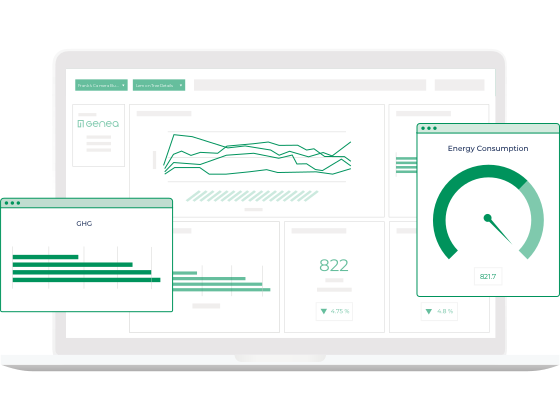How Energy Analytics are Driving Change in Commercial Real Estate

In the days of paper spreadsheets and clipboards, determining energy inefficiencies in CRE was…inefficient. The process often involved guesswork and obtuse billing formulas. When it came to pinpointing sustainability measures, building teams were left feeling around in the dark — sometimes literally. (Hard-to-reach meters in dank basements, anyone?)
In recent years, “sustainability” has become a trendy topic. Yet, some portfolio teams have cast doubt when it comes to taking the financial leap required to become sustainable. Why?
Until recently, the actual cost-benefit has been hard to predict. As many can attest, swapping fluorescent lights for LEDs gets pricey, fast. These upfront costs feel daunting, especially since saving money over the long haul is not exactly the sweet, instant, cash-saving headrush industry professionals are accustomed to.
“[Sustainability] is worth it from an environmental standpoint. But is it worth it from a consumption standpoint?” asked Brian Haine, Technical Director at Genea, at the software-as-a-service provider. “It comes back to: You can’t manage what you don’t measure. That’s the first step—to start measuring.”
Enter energy analytics.
A Changing Landscape
Energy analytics are powerful software tools that monitor and collect information about utility usage. With these programs, CRE portfolio and sustainability managers can measure everything from hourly consumption to greenhouse gas emissions. These tools provide meaningful insight into building systems and establish energy baselines.
With data, teams can more accurately calculate key performance indicators (KPIs), which historically has been a challenge. But for those people who are still hesitant to use analytics software, these tools may help save expenses more than you realize.
Let’s do a fun activity. Imagine we were to personify analytics, giving it three jobs – say, an accountant, a marketer, and an environmental activist. This is how it would function in each role.
System Triage: The Accountant
Your HVAC system runs from 8 a.m. to 6 p.m. At the end of the month, you receive a bill from the utility company. The cost is more than you predicted! You know there is a problem with the system, but without analytics, knowing where and when the problem occurred remains a mystery. Any effort to triage the issue will take time. Conversely, consumption charts are provided in many analytics programs, making it possible to identify and triage the energy spike well before the billing period ends.
Conscientious Investors: The Marketer
Throughout the industry, ESG, or environmental social governance, is making ripples. The criterion helps investors and prospective tenants make decisions about where to spend their money. Analytics can work as a form of marketing, giving you hard statistics to show potential tenants or investors.
“ESG is not one thing, it’s not three things; it’s a filter we want to put on everything,” said Tama Huang, chief innovation officer at CohnReznick, to Biznow. “It’s about building the right thing in the right way for the right reason.”
An added benefit of more closely monitoring your BMS with analytics is tenant billing. Historically, billing tenants relied on formulas. Now tenants can see how and when they use energy. Some property managers have even incentivized their tenants to save energy by turning it into a competition.
Energy Regulations Tighten: The Environmental Activist
Although providing tenants monthly usage statements is still optional in most places, some states are already seeing it become law. ASHRAE 90.1 is currently in most states across the country, however, more stringent measures have been taken in New York, California, and Washington State. California Title 24 requires the disaggregation of all meters and the distribution of utility data to tenants. In other words, it’s not a matter of if changes take place, it’s a matter of when.
The Future of Data in CRE
Ultimately, the decision of using analytics comes back to Haine’s “measure-manage” mantra. To make the best predictions, data must be compiled. But currently, focus has shifted from sustainability to simply enduring.
“Most people are still focused on [the question] ‘how do we get through COVID,’” Haine said. “A lot of property managers are more concerned with getting tenants back into the building.”
But Haine surmised that if, come the New Year, most workplaces started working from the office again, then data analytics would suddenly become a top priority.
“It’s one of those things that [teams] brush aside because it’s not making them money,” Haine said. “But in the long run it helps them save money, and it’s good for the environment.”
This guest blog post was provided by Genea. Visit Genea to learn more about their services.


